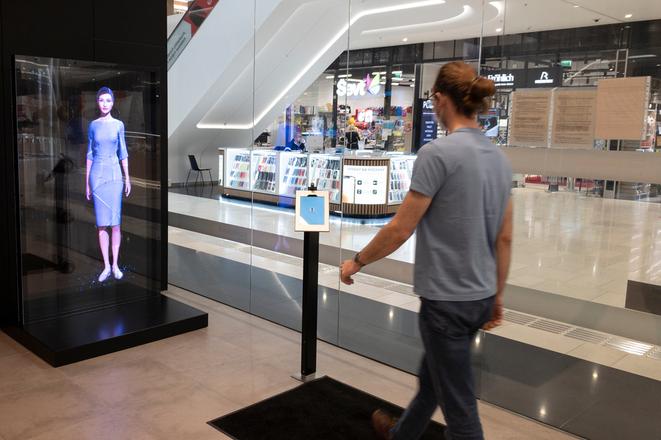Walk into the Slovenská Sporiteľňa bank branch in the new Nivy centre, in central Bratislava, and you will be welcomed by a woman in her thirties with dark brown hair, blue eyes and a smart blue dress. At first glance, she looks like a real person, but in fact this is a human-sized holographic assistant, named Vesna – the first of its kind in Slovakia. Vesna is actually a chatbot, albeit one that has been given a human appearance by the latest holographic technology.
“A holographic assistant is actually materialised artificial intelligence,” said Matej Šulgan, whose company Optio participated in Vesna’s development. “There is already a lot of artificial intelligence, but mostly working in the background for now. Holograms can make it more acceptable for people.”
Fascination with holograms
Optio
Launched in 2008 by Matej Šulgan
Since the very beginning it has dealt with video and imaging technologies, and providing services and technologies for live events
Today its activities are divided into two main categories – (1) providing services for live events and (2) fixed installations, i.e. equipping hotels, cinemas, galleries with imaging technologies
Šulgan admits that nobody has yet been able to create a perfect hologram as represented in films like Star Wars.
“We can’t stop a photon somewhere in the air, so we always create the hologram using some medium to display it on,” said Šulgan, founder and CEO of Optio. “It’s our brain that creates the 3D image of the presented item in our heads.”
Optio, a company focusing on imaging technologies, firstly used holographic pyramids, a technology based on one-way mirrors and extensively used in cinema, at events and presentations it organised for its clients. But the pyramids still had a barrier of plexiglass walls. This physical limit already spoiled the perception of reality concerning the hologram. Also, it was difficult to use the technology in over-lit spaces.



 Vesna, a holographic assistant, can help clients with straightforward tasks like opening a bank account or dealing with a lost bank card. (source: Courtesy of Optio)
Vesna, a holographic assistant, can help clients with straightforward tasks like opening a bank account or dealing with a lost bank card. (source: Courtesy of Optio)